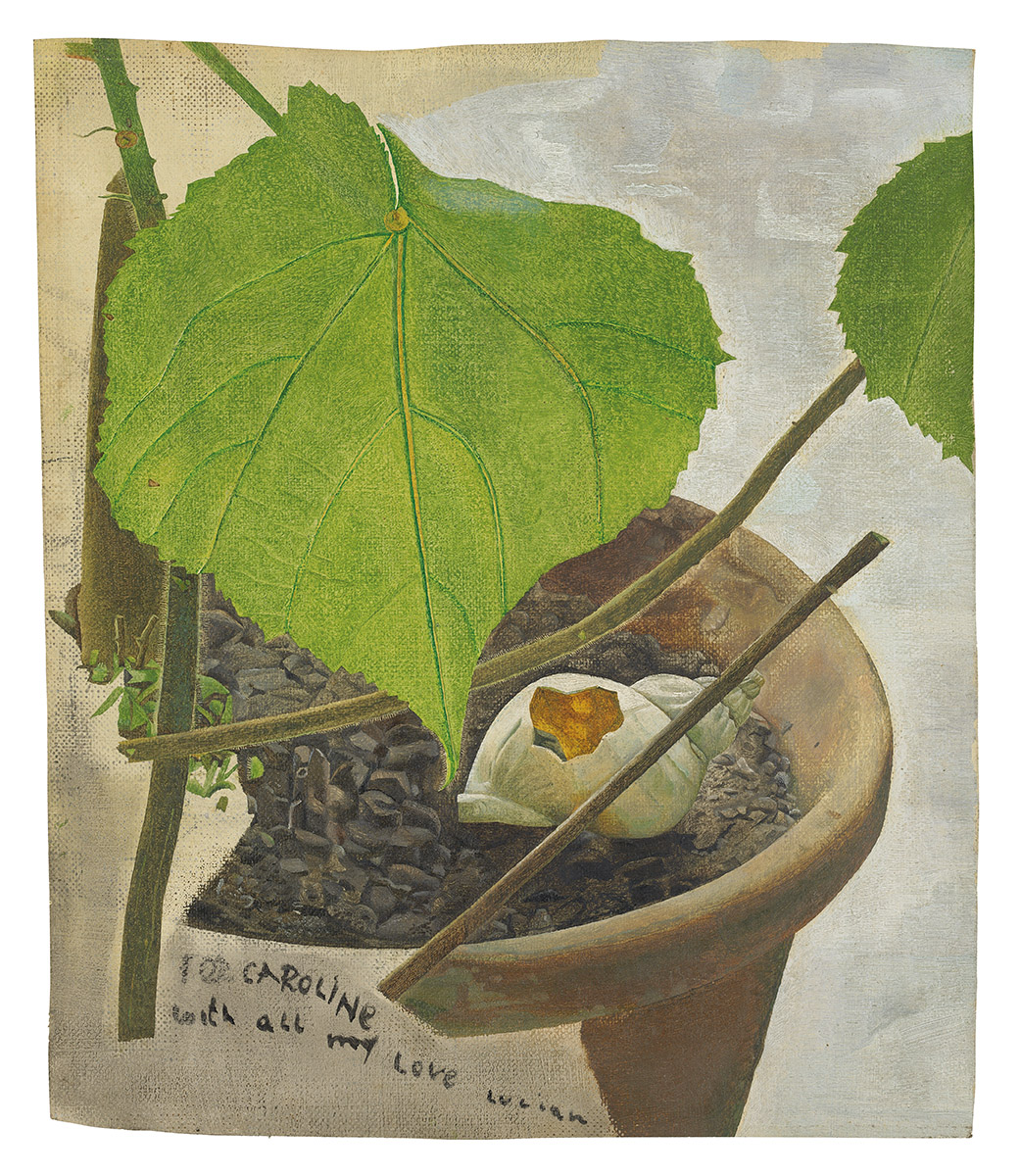This wonderful Cornish workshop and museum is dedicated to the legacy of studio pottery trailblazer Bernard Leach
3 beautiful plant artworks by Lucian Freud
3 beautiful plant artworks by Lucian Freud
23 Nov 2022
Lucian Freud was no gardener, nor plant lover. Yet his paintings of plants – and weeds – are some of the most remarkable, and overlooked, of 20th-century art history. Now, in the year of the centenary of the artist’s birth, a new exhibition at London’s Garden Museum takes his plant works as its focus. Its curator, Giovanni Aloi, reveals the story behind three of the paintings on show

Still Life with Zimmerlinde, c.1950. Private collection: Photo: © Christie’s Images, The LucianFreud Archive, All Rights Reserved 2022/Bridgeman Images
Dedicated to the artist’s second wife, Caroline Blackwood, Still Life with Zimmerlinde is most likely a small fragment of a much larger canvas that Freud never completed. He once said that, after they divorced in 1959, Blackwood destroyed all the drawings and paintings he gave her. Miraculously, this small gem survived. Long forgotten, the painting was sold at auction in 2018 for £908,750. All Zimmerlinde painted by Freud are descendants of plants originally grown by Sigmund Freud in Vienna, which he brought to the UK after fleeing the Nazi regime in 1938. Cuttings of these plants were propagated and shared by family members and over time became an unofficial Freud family emblem.
Cyclamen, 1964. Private collection © The Lucian Freud Archive, Bridgeman Images
Freud’s Cyclamen is a small oil on canvas (45.7 x 49.2 cm) capturing the delicate beauty of fading flowers and curling leaves. The bold composition foregrounds the plant in a way that recalls Caravaggio’s famous Canestra di frutta (1597–1600), an allegorical representation of the crisis pervading the Catholic Church under the siege of Protestantism. However, Freud, unlike the Italian Baroque master, was not concerned with the symbolic meaning of the plants he painted. Instead, his Cyclamen asks us to focus on the plant and observe its vegetal behaviour. ‘Lovely forms certainly,’ he said about cyclamens. ‘They die in such a dramatic way. It’s as if they fill and run over. They crash down, their stems turn to jelly and their veins harden.’
Small Fern, 1967. Private collection © The Lucian Freud Archive, Bridgeman Images
A work from the collection of King Charles III, Small Fern encapsulates Freud’s originality in approaching plants. The composition is highly unusual for a painting of a plant. Placed on the floor, seen from a high angle, the fern is not nestled in a lush forest undergrowth or situated in the stately greenhouse of a botanic garden. Ferns were absent from the classical 17th-century still-life genre. Other flowering plants like roses, daisies, carnations and poppies were privileged because of their clear symbolic associations with Christian themes. Ferns, in comparison, had nothing to say about anything but themselves. So, snug in the modesty of its terracotta pot and stripped of important cultural contexts, this fern sits in the corner of an unremarkable room, seemingly reaching out towards the light, determined to make the most of the little it can reach.
For more
To read our whole feature on Lucian Freud and his plant works, see the latest issue of The Arts Society Magazine, out now and available exclusively to members and supporters of The Arts Society (to join see theartssociety.org/member-benefits)
See
Lucian Freud: Plant Portraits
Garden Museum, London; until 5 March 2023; gardenmuseum.org.uk
More shows marking the centenary
The Credit Suisse Exhibition Lucian Freud: New Perspectives
The first major survey of Freud’s paintings for 10 years
The National Gallery, London;
until 22 January 2023; nationalgallery.org.uk
Lucian Freud: Interior Life
Hazlitt Holland-Hibbert Gallery, London;
until 16 December; hh-h.com
Lucian Freud: The Painter and His Family
Freud Museum, London;
until 29 January 2023; freud.org.uk
About the author
Dr Giovanni Aloi is an author, educator and curator specialising in the representation of nature and the environment in art. He currently teaches at the School of the Art Institute of Chicago and is the editor-in-chief of Antennae: The Journal of Nature in Visual Culture. He is the curator of Lucian Freud: Plant Portraits at the Garden Museum and author of the book Lucian Freud Herbarium
JOIN OUR MAILING LIST
Become an instant expert!
Find out more about the arts by becoming a Supporter of The Arts Society.
For just £20 a year you will receive invitations to exclusive member events and courses, special offers and concessions, our regular newsletter and our beautiful arts magazine, full of news, views, events and artist profiles.
FIND YOUR NEAREST SOCIETY
MORE FEATURES
Ever wanted to write a crime novel? As Britain’s annual crime writing festival opens, we uncover some top leads
It’s just 10 days until the Summer Olympic Games open in Paris. To mark the moment, Simon Inglis reveals how art and design play a key part in this, the world’s most spectacular multi-sport competition



